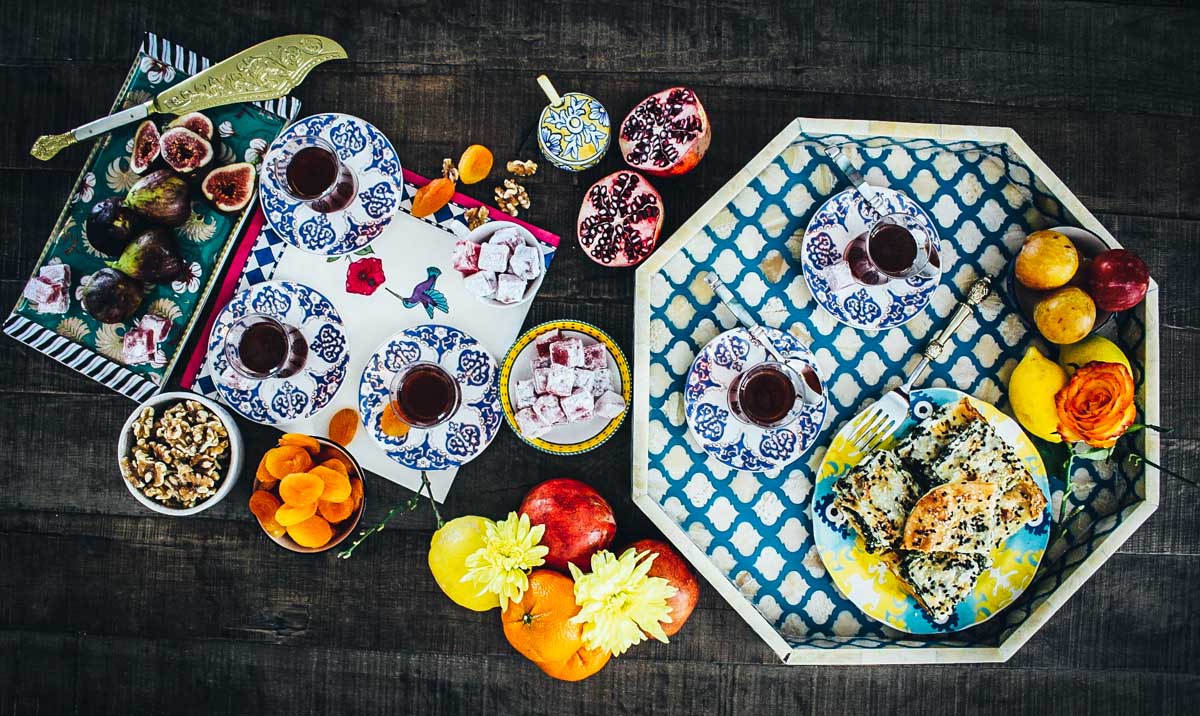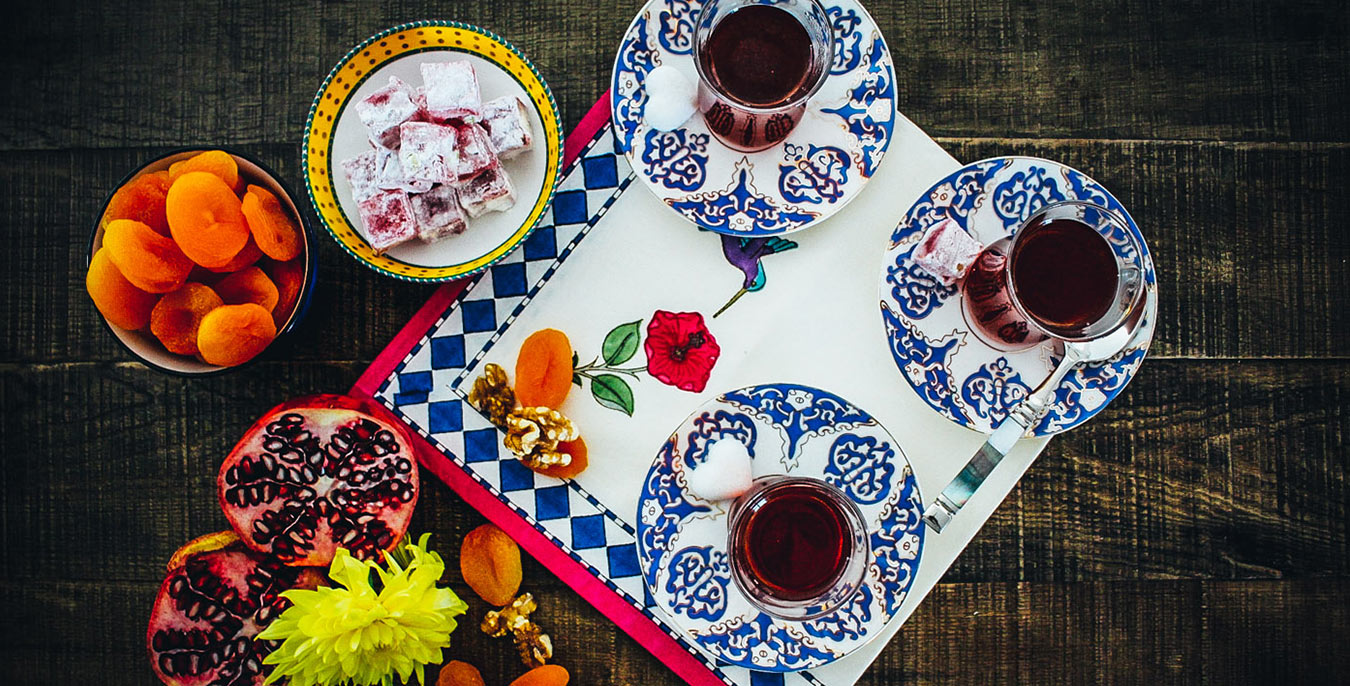Villa Yildiz in all her glory. Beautifully constructed in canary yellow stone that so subtly contrasted with the blooms of lemon and lime trees surrounding her. Outside stood a rustic brick oven where fresh breads were made and the smell of adana kebabs grilling on skewers filled the air. Villa Yildiz is the summer home of my Uncle Tanvir and Aunt Yildiz in Antalya, Turkey. I always knew we had a Turkish side of the family, but my life was spent far and away in the small town of Chepachet, Rhode Island, which no one in Antalya, let alone all of Turkey had ever heard of. Flash forward decades later, we packed up and travelled to Antalya from our little state for a summer holiday. Antalya glimmered brightly with its turquoise briny waters and pebbled beaches. The air was hot, but enveloped by a citrus aroma that seemed to follow me wherever I went.
Meeting family after years is always a thought-provoking experience. I expected to feel this sudden connection, but the first meeting was full of awkward silences and the continual mention of how tall I had become. Days passed in Antalya and I started to feel part of the life there. Mornings were spent at the beach relishing the warm salty sea and Mediterranean sun. It was quite a change from the cold Atlantic I had grown so accustomed to. Long, lazy afternoons were spent in the garden under the shade of the fig trees that adorned Villa Yildiz.
There is something about daily ritual that unveils a sense of comfort and belonging. Everyday at five P.M. on the dot arrived the çay, better known as chai or tea. I used to anticipate its arrival as it would always occur after the adhan for asr prayer and the hot sun would finally be making way over my head to the west. Tanvir Uncle would awaken from his afternoon siesta feeling groggy and in need of tea, calling out to my aunt to ask if it was ready.
In Turkey, tea is served at all times of the day, from morning to night. They say there is no actual tea-time in Turkey, but there was something about the afternoon tea ritual that seemed sacred. It was that perfect midday break where everyone gathered together to converse and rejuvenate themselves for the rest of the day. I saw my father reunited with his brother discussing the old days in Pakistan and how they have come so far. Both academics with a love of poetry and culture, they would share verses in Urdu, Turkish and Farsi.

A Turkish poet once said: Of the many gifts from God that be, the best of them is a glass of tea. Aunt Yildiz would bring out the beautiful crimson colored tea in narrow-waisted glass cups placed on an ornate bone inlay tray. Sipping away at the jewel-toned elixir, I spoke with my cousins as we exchanged stories of our lives and memories from our younger years. In Ottoman fashion there was always a spread of eats accompanying the çay. We nibbled on flaky börek, which is a cheese pie made with yukfa or filo dough.
Each day there was a different filling from savory kıymalı or minced lamb to ıspanaklı or spinach with feta all wrapped up like buttery little parcels. Börek is commonest form of meat or cheese pastry in Turkey, made by women in every village. The pastry is rolled paper thin with a special rolling pin and usually brushed with an egg mixture before being baked. Though simple in nature, börek was still popular with the Ottoman sultans who were known for their voracious and gluttonous meals. It was also often served at the palace for visiting dignitaries, and was a favorite of Mehmed the Conqueror.
The tea came out pot after pot after pot. My tulip shaped glass was never empty, and I was only to learn later that once you have had enough tea, it is customary to place the spoon across the rim of the glass to indicate that you want no more. Clink, clink, clink was the sound of kesme şeker or sugar cubes being stirred into the çay. I always had my tea unsweetened, because after the börek came the colorful bowls of lokum or Turkish delight. Piled high in a multitude of colors, the lokum sweetened my palate as the afternoon sun was dwindling away. During Ottoman times Ali Muhiddin Haci Bekir, the famed confectioner, created this iconic sweet treat. Fable has it that the candy originated when the Sultan declared he was in desperate need of soft candy as he had broken one too many teeth eating hard candy. Tanvir Uncle assured us all that it was a farce. What is true is that the word lokum has presence in not only Turkish, but also Arabic, Urdu and Persian. It literally means “bite sized morsel” in all four languages. In Ottoman times the full name was rahat lokum, meaning “easy to swallow.” Lokum can have fillings of chopped nuts such as pistachios and hazelnuts. In order to prevent the cubes of lokum from sticking to each other they are usually sprinkled with finely powdered sugar.

I stood with my mother and Yildiz over the fire as I watched her make the perfect pot of Turkish tea. In fact there are two kettles called a çaydanlik, perfectly placed one on top of the other. The bottom pot carries the water, while the top pot holds the loose tea leaves. There was a sort of scientific art to the whole process and it seemed to be all about timing. Every step was dependent on when the water in the bottom kettle had boiled andthe tea leaves had sunk to the bottom of the pot. Yildiz would open the lid and quietly utter “not yet.” Perhaps it was that moment of instinctually knowing exactly when the tea has steeped enough that can only be learned through generations and generations of standing with one’s mother next to the fire as she makes tea for the family.
“We like our çay koyu meaning strong, the crimson color must show.”
The Ottomans used to say that good tea must satisfy three requirements. It must be: lebrenk (the color of the lips, lebsuz) hot enough to scald the lips, and lebriz (the glass must be full to the lip). Unlike the ancient tea traditions of the Far East, tea was not a mainstream daily ritual in Turkey till the late nineteenth century. In the early 1920’s Atatürk encouraged the drinking of tea as WWI repercussions created a strain on the import of coffee and çay was the more affordable option for the majority of the population. Nowadays all Turkish çay is produced in the Eastern Black Sea region, particularly Rize, which is known as the tea capital of Turkey.
Soon enough the sound of maghrib call to prayer would echo its way into the garden ending another perfect afternoon. It was in those afternoons that I learned about the importance of ritual and heritage. I understood the value of diversity and finding commonality over a simple cup of tea and pastries. The afternoon became something I looked forward to every day, the time where it seemed that, not only our family, but also all of Turkey gathered together to break and savor the day. There was something about that time in the afternoon, when the silhouette of the sun had faded and the sea breeze was drifting into the garden that will never escape me. It was under those fig trees, with the wafting aroma of citrus in the air and the sun just about to set that my Turkish delight was my afternoon delight.



Our comments section is for members only.
Join today to gain exclusive access.